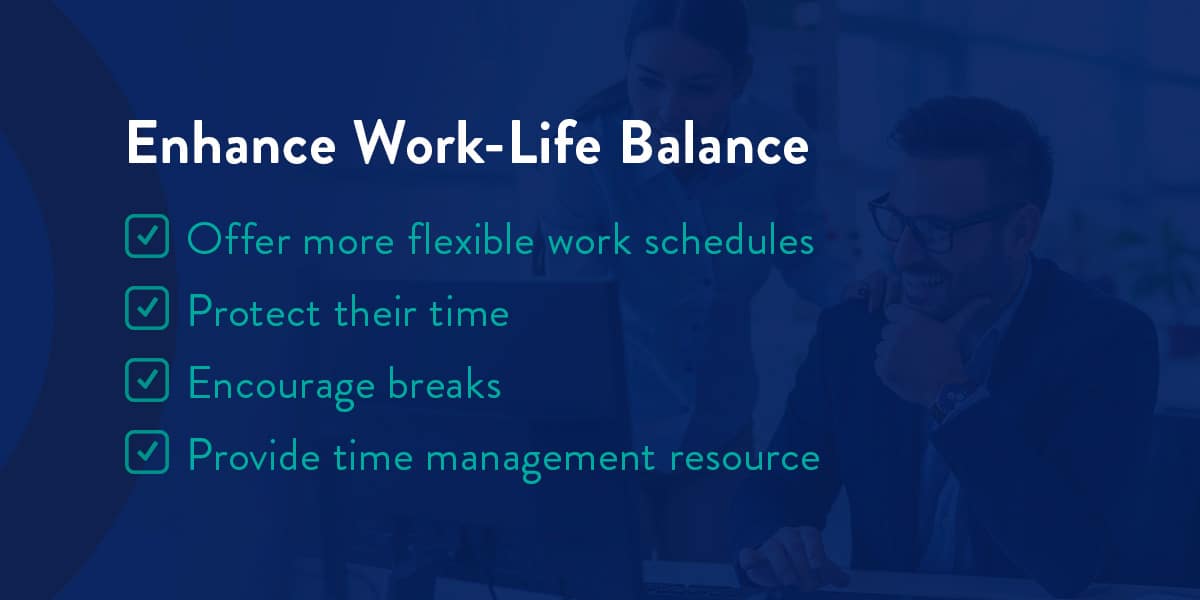Leadership
How Managers Prevent Teams From Burning Out

If your teams are constantly stressed, missing deadlines and creating a negative environment for each other, they may be burnt out. As a leader, you can take the initiative to prevent burnout and help employees achieve a better balance.
Understanding how managers can prevent burnout leads to improved productivity and overall wellbeing.
Understanding Team Burnout
Team burnout is an occupational phenomenon caused by factors arising primarily in the workplace. The disengagement and high stress it results in originates from lofty expectations, heavy workloads and intense deadlines. Signs of burnout start showing when employees push past their limits for a prolonged period.
Burnout Indicators
Identifying the early signs of burnout is a crucial task for managers. It’s essential you pay attention to employees who are coming to work late or missing deadlines and not dismiss that behavior as mood swings or laziness.
Here are some symptoms to watch for to help identify the early signs of burnout:
- Irritability
- Fatigue
- Difficulty focusing
- Reduced productivity
- Sleeplessness
- Increased sensitivity or emotional fragility
- Headaches
- Argumentativeness and harshness
- Shortness of breath
- Regular anxiety and worry
These symptoms may arise in individuals, multiple team members or the team as a whole. Recognizing burnout is the first step toward providing the support they need.
A lot of burnout cases stem from the workplace, but there are exceptions. Your employees could also face challenges in their personal lives that may affect their performance and mood in the office. Interventions should focus on individuals’ coping mechanisms and workplace-specific factors.
The Impact of Burnout
Burnout significantly impacts your employees’ health and working capabilities. It affects motivation and productivity and could lead to increased staff turnover and absenteeism. These factors also affect the workplace in the long run, contributing to massive expenses like onboarding, health care and quality control.
Here are some other ways burnout affects teams and the workplace:
- Decreased innovation
- Reduced customer satisfaction
- Decreased team morale
- Increased errors
- Increased sick leave
- Reduced passion
Top Tips to Prevent Employee Burnout
Learning how to prevent burnout as a manager is crucial to maintaining a productive and healthy working environment. You must utilize various strategies to improve job satisfaction and nurture a resilient workforce to guarantee long-term growth and success for your employees and organization.
Promote Employee Wellbeing
Your employees spend a large portion of their lives at work, and it’s not just a place where they complete professional tasks. Recognizing the importance of mental health in the workplace is crucial to improving wellbeing.
Prioritizing mental health could provide the following benefits:
- Decreased absenteeism
- Increased creativity and innovation
- Improved productivity
- Boosted employee retention
An excellent way to focus on mental health in the workplace is through employee wellness programs. They provide various advantages by going beyond typical offerings like gym memberships and yoga classes. Some may include:
- On-site medical checkups to help detect health concerns.
- Lessons on financial literacy to help with money-related stress.
- Nutrition workshops that promote healthy eating.

Enhance Work-Life Balance
Encouraging work-life balance is a good first step. Here are the most effective ways to implement it:
- Offer more flexible work schedules: Offer remote work or hybrid options to accommodate your employees’ personal needs and give them time to manage their home responsibilities.
- Protect their time: Reduce incoming workloads so your teams don’t get overwhelmed. Make it OK to delay or turn down work so they can more easily regulate it themselves.
- Encourage breaks: Let your employees get out of the office or away from their desks occasionally. Promote coffee, water and breaks so they can take a breather and recharge.
- Provide time management resources: Communicate what you expect and assist them with structuring their time to complete tasks.
Provide Tailored Support Systems
Burnout can seriously impact mental health, so it’s crucial to provide systems employees can use to manage their stress.
Start by offering relevant resources, such as guides on well-being and information about wellness programs. You can also direct your employees to external assistance, such as therapists and health care professionals.
Provide confidential support and counseling services through employee assistance programs to help your staff navigate burnout symptoms.
Encourage Team Engagement and Motivation
Employee motivation and engagement are crucial to a successful business. Motivated employees bring enthusiasm to the workplace. Engagement involves fostering intrinsic motivation by creating a space where employees feel confident to give their best. Here are two ways to do this:
1. Employee Engagement
Promoting optimal conditions in the workplace motivates employee productivity and commitment to the company’s values and goals. It improves their drive to help the business toward success while reducing burnout.
The best way to create the right conditions is to develop an inclusive work culture. It helps employees feel like they belong, improving productivity, creativity and morale. This type of workplace also encourages a collaborative environment and attracts exceptional staff.
Creating an inclusive culture doesn’t happen overnight — it takes time and planning. Reducing burnout through team building activities is an excellent way to start. Events like off-site retreats, laser tag and team lunches help build camaraderie, strengthen relationships and improve teamwork.
2. Motivational Strategies
Motivation is the cornerstone of productivity. While some employees may find it intrinsically, many experience it extrinsically:
- Intrinsic motivation typically originates from their passion for their work.
- Extrinsic motivation can come from both positive and negative perceptions, like rewards or avoiding unpleasant situations.
Your goal should be to encourage intrinsic and positive extrinsic motivation. There are several strategies you can employ to achieve this:
- Provide realistic workloads and expectations: Workload volumes adjust over time, so it’s key to evaluate whether it’s reasonable for your employees to complete them. Burnout lessens when you remove unrealistic timelines.
- Offer development and growth opportunities: Many employees want to improve their skills so they can progress in their careers. Find out what they want to learn and provide them with opportunities to get there.
- Give rewards and recognition: Your employees want to feel appreciated for all their hard work. Acknowledge their efforts in meetings, and consider providing bonuses or customized benefits like wellness perks or learning stipends.
Open Communication Channels
Open communication encourages job satisfaction and helps prevent burnout. Your employees feel more motivated and engaged when they believe you take their concerns and contributions seriously.
Create a space where employees feel comfortable asking for assistance, sharing concerns and redistributing workloads. This openness can lead to collaboration and transparency, building empathy, trust and a sense of community.
Here are some ways you can maintain open lines of communication:
- Develop an open-door policy: Make it easier for your employees to approach management. They will feel more heard.
- Organize regular check-ins: Schedule weekly or monthly meetings to assess your employees’ well-being and determine if they need any help.
- Urge employees to communicate when they’re feeling burnt out: Encourage your employees to speak up when they aren’t doing well, either during check-ins or through other channels like email.
- Present feedback opportunities: Allow your employees to discuss their ideas and concerns in a positive environment through various forms of feedback, such as focus groups and surveys.
Burnout Intervention Training for Managers and Team Leaders
Burnout and high employee turnover are often a result of poor management and extreme stress in the workplace. Training your staff effectively and encouraging continuous learning boosts employee confidence, retention and trust.
The best way to invest in your employees’ development and wellbeing is by training managers and leaders who can coach, inspire and guide your staff to grow.
Here are a few initiatives to empower your employees in leadership positions:
- Developing a trusting culture
- Delegating developmental responsibilities
- Providing targeted training
- Communicating the company’s vision and mission
- Promoting open communication
- Encouraging continuous learning
Prevent Team Burnout With Exude Human Capital
Management is at the forefront of preventing team burnout, so you need to provide the tools your managers need to do it effectively. At Exude, we offer a variety of solutions to help reduce team burnout and boost productivity and morale.
We provide custom training, employee surveys and inclusive culture alignment. Contact us today for a consultation and empower your leaders.








